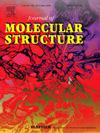Photocatalyzed amination of benzylic C(sp3)−H bonds via C−N coupling: Green synthesis and NMR analysis of N-benzylanilines
IF 4
2区 化学
Q2 CHEMISTRY, PHYSICAL
引用次数: 0
Abstract
A facile, efficient and green photo-catalyzed amination of benzylic C(sp3)−H bonds via C−N coupling for the synthesis of novel N-benzylaniline derivatives starting from readily available toluene derivative and aniline derivative under irradiation of UV LEDs (365 nm) with catalyst Fe(III), without using any bases, strong oxidants, complex ligands, or precious metals is reported. The N-benzylaniline products could be obtained under UV LEDs irradiation at room temperature in 12 h with definite compatibilities with functional groups. To discuss the characteristic pattern of armatic protons and carbons, to identify its structure, NMR spectra analysis (1D and 2D-NMR) was carried out in details by the chemical shifts, couplings and correlations. The energy levels of molecular orbitals (HOMO and LUMO) for N-benzylaniline product (3a) were investigated.
通过 C-N 偶联对苄基 C(sp3)-H 键进行光催化胺化:N-苄基苯胺的绿色合成与核磁共振分析
本研究报道了一种简便、高效和绿色的光催化苄基 C(sp3)-H 键的胺化反应,该反应通过 C-N 偶联,在紫外发光二极管(365 纳米)的照射下,不使用任何碱、强氧化剂、复杂配体或贵金属,以容易获得的甲苯衍生物和苯胺衍生物为原料,合成新型 N-苄基苯胺衍生物。在紫外 LED 的照射下,室温条件下 12 小时内即可获得 N-苄基苯胺产品,且与官能团具有明确的相容性。为了讨论肱质子和碳的特征模式,确定其结构,我们通过化学位移、耦合和相关性对核磁共振光谱(一维和二维核磁共振)进行了详细分析。研究了 N-苄基苯胺产物 (3a) 的分子轨道能级(HOMO 和 LUMO)。
本文章由计算机程序翻译,如有差异,请以英文原文为准。
求助全文
约1分钟内获得全文
求助全文
来源期刊

Journal of Molecular Structure
化学-物理化学
CiteScore
7.10
自引率
15.80%
发文量
2384
审稿时长
45 days
期刊介绍:
The Journal of Molecular Structure is dedicated to the publication of full-length articles and review papers, providing important new structural information on all types of chemical species including:
• Stable and unstable molecules in all types of environments (vapour, molecular beam, liquid, solution, liquid crystal, solid state, matrix-isolated, surface-absorbed etc.)
• Chemical intermediates
• Molecules in excited states
• Biological molecules
• Polymers.
The methods used may include any combination of spectroscopic and non-spectroscopic techniques, for example:
• Infrared spectroscopy (mid, far, near)
• Raman spectroscopy and non-linear Raman methods (CARS, etc.)
• Electronic absorption spectroscopy
• Optical rotatory dispersion and circular dichroism
• Fluorescence and phosphorescence techniques
• Electron spectroscopies (PES, XPS), EXAFS, etc.
• Microwave spectroscopy
• Electron diffraction
• NMR and ESR spectroscopies
• Mössbauer spectroscopy
• X-ray crystallography
• Charge Density Analyses
• Computational Studies (supplementing experimental methods)
We encourage publications combining theoretical and experimental approaches. The structural insights gained by the studies should be correlated with the properties, activity and/ or reactivity of the molecule under investigation and the relevance of this molecule and its implications should be discussed.
 求助内容:
求助内容: 应助结果提醒方式:
应助结果提醒方式:


